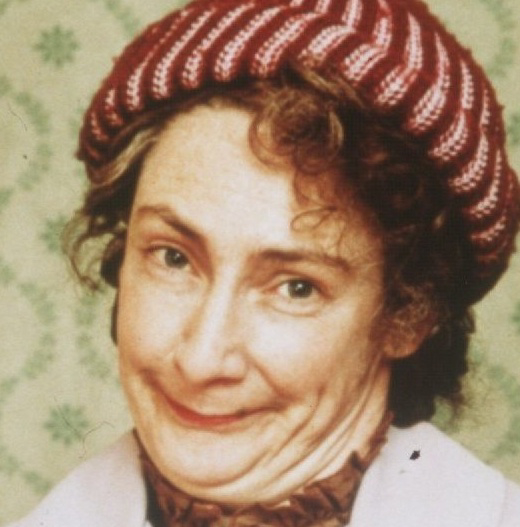Used a couple of US recipes recently and most of the ingredients are in cups, or spoons, not by weight. This is a nightmare to convert. Do Americans not own scales or something? What’s the reason for measuring everything by volume?
Apparently the French sent over a metric system for the Americans to use, but the ship was lost.
I’ve seen numerous sources for this.
someone should make an alternate history tv show where the ship made it. bonus if it’s of a parody kind.
Watch some cooking shows on YouTube where they cook from two hundred year old cookbooks. Weighing stuff is a modern thing. All the “ye olde recipes” from Europe and the colonies were done in cups, spoons, and some other volume measurements we don’t use anymore like “jills”. (If they even bother to specify meaurements.)
“the” and “ye” are amusingly redundant next to each other.
I was positively intrigued the day I learned “ye olde shoppe” is pronounced exactly the same way as “the old shop”.
Jiggers. 1.5 oz. Or a pony shot (small end of the jigger) 0.75 oz.
I see someone watches tasting history
My favourite is when the book told him to put on a “good amount” of something
Back in my childhood (60+ years ago) we had recipes that called for a “breakfast cup’ of this and a “teacup” of that. And yes, we did have actual breakfast cups and teacups, which had significantly different volumes. What kind of cup do they use in the US I wonder?
Bartenders routinely measure mixed drink additives in “barspoons”.
My grandmother in law has a biscuit recipe that starts with “fill the bowl with flour”. What bowl? The bowl she’s been making biscuits with for 50 years.
Point is, people left to their own devices will use whatever measurement is handy.
“Do Americans not own scales or something?”
For a good long while, no they didn’t. For a large fraction of American history a typical home kitchen had no bespoke measuring equipment at all; but tea cups, tea spoons and table spoons were typically available and made to pretty similar sizes, plus if you always used the same ones the proportions would be roughly the same, so meh.
A lot of traditional recipes were written this way, and it has remained so by tradition. A system of inexpensive, easy to manufacture measuring cups and spoons became standard equipment by the mid-20th century, and hasn’t changed to this day because it works just fine.
The US government is in the habit of publishing recipes with a deliberately low minimum equipment list. The United States Department of Agriculture for example conducts extensive testing on home canning recipes and methods, and deliberately writes their recipes to be used in poorly equipped kitchens, because the kind of folks who rely on putting up home grown vegetables for the winter don’t tend to spend a lot of money on Sharper Image kitchen gadgetry. Flipping through my copy of the Ball Complete Book of Home Preserving, I find about a third of recipes could be made using nothing but a mason jar or two as your only measuring tool, as most mason jars (excluding the deliberately decorative ones) have graduation marks in cups, ounces and milliliters molded into them.
Because it’s quicker to just use a measuring cup than by weighing it out every time, I assume.
I do have a scale, but I mostly use it when portioning out a big chub of ground turkey or beef.
Ding ding ding!
If you’d use metric, then weight & measurements on measuring cups would be basically the same. Like, 1 liter or milk or water is exactly 1 Kg. Using arbitrary measurements like “cups” or “feet” are just confusing and prone to error.
Milk has a specific gravity slightly higher than 1, so that isn’t accurate.
Also, “cups” and “feet” aren’t arbitrary. They aren’t part of the metric system, but a cup is a standardized unit of volume and a foot is a standardized unit of length.
It’s close enough for home cooking, the specific gravity of milk is around 1030g/L so unless your recipe calls for multiple liters of Milk the small difference isn’t going to affect the result.
It’s close enough for home cooking
And now you are getting to the reason why American use volume for recipes. If I don’t need the precision of mass for recipes as it won’t appreciably affect the taste, then why break out the scale?
Because the difference between packing a cup of flour and not packing a cup of flour is as much as 30%
It doesn’t really matter for liquids, but dry ingredients are a whole other ballgame when it comes to this mess.
It’s really mainly only flour though, because can be compacted, most of the things that you’re using in the kitchen like baking powder or sugar aren’t going to be compacted to any appreciable level.
For flour, you pour it into your measuring cup and then run the spine of a knife or something over it to get rid of the excess flour and get a level cup
There are many of other things that can be compacted or have different volume to weight ratios.
Corn starch is like flour, you can pack it down.
Salt (Table vs Kosher) Kosher salt has about half the volume to weight as table salt.
Shredded Cheese (this one always bugs me. Is it 3 cups after shredding, or before… how packed in should it be), etc.
In my other responses, I’ve noted that I don’t bake. In other people’s responses, they’ve noted that there are still a lot of baking recipes out there that don’t require precision.
Precision in baking is massively overstated. The earliest recipes are in parts if you’re lucky. More likely they are mix in these ingredients until it looks right.
Elevation changes everything though and if you don’t adjust the measurements change more.
If you’re at sea level, sure.
Exactly. How is a foot anymore arbitrary then a meter?
Or a cup anymore arbitrary then an ounce?
Imperial measurements were based on arbitrary things, metric has specific scientific definitions for their weights.
1l of water is 1kg at sea level, why the fuck is kings foot size the defacto foot?
Imperial measurements were based on arbitrary things, metric has specific scientific definitions for their weights.
What do you mean? A pound is legally defined as 0.45359237 kilograms.
And the kilogram is defined:
The kilogram, symbol kg, is the SI unit of mass. It is defined by taking the fixed numerical value of the Planck constant h to be 6.62607015×10^−34 when expressed in the unit J⋅s, which is equal to kg⋅m^2 ⋅s^−1, where the metre and the second are defined in terms of c and ΔνCs.
These are all currently defined off of the same universal constants, just with different multipliers, which are all arbitrary numbers: 6.62607015 is just about as arbitrary as 0.45359237. Hell, the number 10 is arbitrary, too, so we still use a system for time based on dividing the Earth’s day into 24 and 60.
Like, I get that there’s some elegance in the historical water-based definitions derived from the arbitrary definition of length, but the definition of “meter” started from about as arbitrary a definition as “foot” (and the meter was generally more difficult to derive in the time of its adoption based on the Earth’s dimensions).
If you have to ask that you have no idea how metric works
Until a few years ago, a kilogram was defined by a block of metal.
From 1799 to 1960, the metre was defined by another block of metal. Before 1799, it was defined by a measurement that was hard to verify.
That kind of sounds arbitrary.
We know
1 liter of milk weighs more than 1 kilo. Milk is denser than water therefore 1 liter of it has to weigh more than water.
Edit: I just looked it up and 1 liter of milk is 1.03 kilos.
Well since we’re nitpicking, a kilogram is a unit of mass, not weight. So unless by “kilo” you meant kilonewton…
Most Americans I know don’t even have a scale in their kitchen!
I (an American) always wonder what a cup of spinach is. Like I can really pack it into a cup or not and there is a huge difference.
Cups, teaspoons, and tablespoons in this context are standardized units of measure. It is very common to find at least one set of measuring cups and spoons in a US kitchen. Scales are uncommon.
I use both. For flour, scales are far, far superior. For sugar, it does not really seem to matter. For small amounts, I suspect my tea/tablespoons might be more accurate than my scale…
Not that accuracy matters that much in a recipe using eggs. Chickens aren’t necessarily known for precision…
Off topic:
I have learned that hens were laying eggs, chicken were the offspring.
Is this a british-american thing or just a common mistake?
Chicks are baby chickens. All hens and roosters are chickens. Does that answer your question?
As an American who has recently learned to love his scale, I’m with you 100%. With that being said, no, many Americans do not have kitchen scales.
Just another one of those things where the rest of world looks at the US and shakes its head. There seems to be a lot of things in the US purely in place based on tradition and logic goes out the window.
But also, there’s no real incentive to change… my brownies taste just fine with a 1/3 cup of oil and a 1/3 cup of water. I am sure they would taste just as good with 80 g of each, but if it works, why change it?
What logic is there in saying grams are better than cups of both work well for the intended task? If I were a professional baker, it’s entirely possible I would have a different opinion, but I (like 99% of Americans) am not.
The difference is accuracy.
But what I’m saying is I’m plenty accurate enough with cups… there would be no appreciable difference for my box of brownies.
You’re maybe plenty accurate for the brownies of your preference, but probably not for professional cooking or other activities that require accuracy.
Do Americans not own scales or something?
I do not own a kitchen scale. Outside of baking, volume works well enough.
Not with salt or anything granular. Liquid is probably fine
It works well enough for me. Salt is relatively uniform, so there isn’t that much variance. With spices, the variance of the spice strength is greater than the variance caused by compaction.
Outside of baking, the tolerance required to get a dish to taste good is rather wide.
Salf is the definition of not uniform.
Try a spoonful of table salt instead of sea salt next time and see how well that goes. In grams it does not matter.
I have one kind of salt that I cook with. I know that if I use different kinds of salt, it can affect the flavor and concentration, so I just go with one kind of salt.
Literally never had a problem with any recipe, ever. This is a non-issue.
Oh okay well if you’ve not had an issue then it can’t be one.
Honestly, what is wrong with the people left on lemmy, why is everyone like this. There was a few months there where you could talk and have a conversation. Then all the good people left and we just get… this.
I know it’s easy to misread the tone of text, but I certainly didn’t mean to offend you. It’s true that it is a complete non-issue for me and *millions *of Americans. I’m simply stating a fact and in no way judging you or criticizing you for asking the question. I’m giving you an answer from my perspective.
what is wrong with the people left on lemmy
You’re the one causing problems here. The others are conversing normally. Lemmy is fine, chill.
Salt tends to be used in such small quantities that you’ll get much larger errors on the typical kitchen scale than with measuring spoons.
Never have I ever thought “oh it would be so much easier to pour my flour into a bowl on a scale” rather than just scoop out a few cups.
Unironically, I do in fact do this all the time. I make large batches when I bake, so it’s easier to just tare and measure everything directly in the stand mixer bowl instead of scooping 16 cups. It’s also less clean up afterwards!
i suppose that does seem easier with high quantities!
I’m always confused by their insistence to use fluid ounces.
An ounce is fine it’s a measurement of mass. But how can you measure liquids by mass, when really what you mean is displacement, its like saying fluid kilograms, it’s not a thing, it makes no sense.
I know Americans probably know what it means but everybody else doesn’t have a clue. If you have 250 fluid oz of something is that like a bucket or a single droplet? Or is it a small booting lake, I have no idea at all.
Fl. Oz are actually nothing to do with weight. They are volume.
For each fluid oz. use 30 ml
It’s only approximate but the official measurements for nutrition actually do it in the US so it’s not a real unit anyway anymore.
The metric system uses a similar principle. 1 liter is a kg of water. It’s just named better.
I’m with you but I get it that sometimes it’s convenient. My wife likes what we call “cup recipes” in baking where everything is measured in cups/glasses (this was a new thing couple of years ago where I live). It’s very fast and convenient.
But yes, it gets out of hand. I mean “a cup of celery”? … How? Why?
I much prefer when they just estimate how many of the particular vegetable I should probably use. A cup of celery? Like 1-2 celeries?
Take a 1-cup measuring cup, chop celery until it’s full. That doesn’t sound difficult to me. I infer it’s merely not what you’re used to.
I tend to prefer to weigh ingredients, but I also have measuring cups and spoons and using them is not so onerous. 🤷♂️
But celery is blocky and has gaps and doesn’t pack well, the amount you get changes drastically depending on how fine you chop it and on random packing.
I’m not arguing that it’s wise. I’m merely arguing that it’s not nearly as inexplicable as that comment made it seem.
Shutout to the one dude who downvoted literally every comment lol I hope you enjoyed it
I think it goes back to Fannie Farmer in 1896, who wrote the first major and comprehensive cookbook in English that used any kind of standard measurements. European cookbooks mostly used vague instructions without any standardized weights or numbers before that. At this point in the industrialized world standardized cup measures were relatively cheap and available. Scales were relatively bulky, expensive, and inaccurate in 1896. So the whole tradition got started, and most of the major cookbooks owed something to Fannie Farmer. Cookbooks that used standardized weights probably got started in other countries much later, when scales were becoming commonplace.
the truth is americans kind of just do things arbitrarily.
shittily
American here but I do a lot of baking, I do own a scale and prefer to weigh ingredients because I’m amazed at the different quantities of flour I can get from cup to cup depending how packed the flour is or how I scoop it.
Yeah, that’s the sort of thing which worries me. I suppose if it’s a recipe which doesn’t need precise measurements it doesn’t matter.
It really depends what sort of recipes you’re making, but for cooking very loose approximations are often fine.
I often have to convert to weight/mass in order to find out how much of an ingredient to buy. I have no idea how many cups an eggplant is. But once I get it home the recipe might as well say “however much eggplant you have.”
If I’m truly off, I will typically scale up the recipe adjusting for the extra meat or vegetable content. I’ll more or less assume that 1lb of meat is interchangeable with 1lb of veggies. That’s not quite true, in particular with salt.
Your mileage may vary though. Some recipes and ingredients are much more sensitive to deviations.
If it calls for 200g of aubergine, then you can weigh that at the shop… It’s more convenient at that end, and you can get the right amount.
I’m going to estimate 99% of recipes in the US don’t give weights for those. It will say one large onion or 3 medium zucchini. There are a few places (serious eats) that tend to give weights but it’s extremely rare. If you’re lucky you’ll get volumes but weights are so rare.















